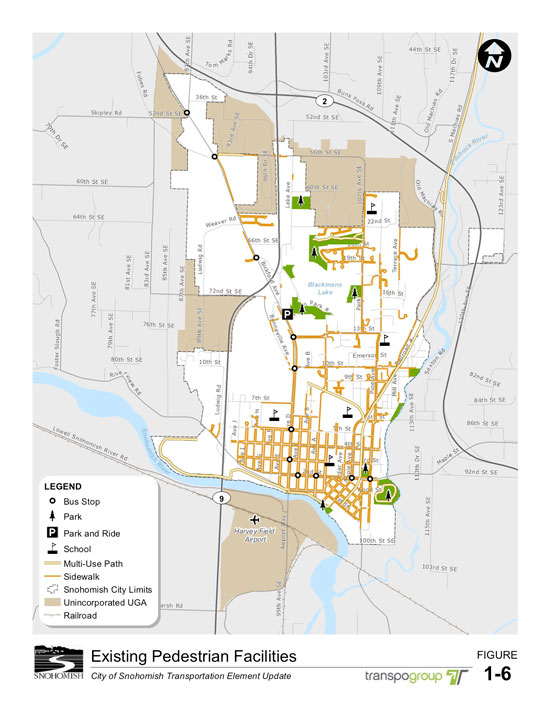SNOHOMISH — If your street lacks a sidewalk, you’re not alone.
Outside of the old town core, most streets are without one.
It would take millions of dollars to repair and build it all, and the city is earmarking a fraction of that, city administrator Steve Schuller pointed out during a “strategies for sidewalks”-style presentation to the City Council last week.
Neighbors in northeast Snohomish residing near the future Walsh Hills subdivision have repeatedly approached council for local road fixes. What neighbors are asking for Terrace Avenue was discussed at length last week.
Finding money for new sidewalks is difficult. There are government grants the city can tap for sidewalks near schools and public spaces, but outside of that, options dry up.
Schuller gave the council a set of recommendations:
One is to increase the earmark for sidewalks to $100,000 a year. Currently, the city dedicates $60,000 annually for repairing existing sidewalks.
On top, it’s recommended the city launch a pilot program to build new sidewalks where neighbors share half the cost. A thought is that if 60% of a street section’s neighbors agree to a sidewalk, they could apply for matching funds to get one.
City Council members want to think further on the pilot project and funding recommendations. The topic is expected to return soon.
A majority of the city’s historic core — from First Street to Sixth Street — already has sidewalks. Coverage gets sparse north of that, a 2015 map shows.
The city’s 2015 transportation plan proposes sidewalks up Bickford Avenue, up Lake Avenue, and a section of Fifth Street.
The city has made progress: Safety curbing was installed with a crosswalk light at Snohomish High School, for example.
In addition, “since 2020, private development projects have constructed over 3,000 feet of sidewalk in the city,” a city report notes.
Terrace Avenue
Neighbors are clear they want improvements along Terrace Avenue, the road off of which developer D.R. Horton plans to build 110 new homes to replace the grounds of the former Delta Rehabilitation Center (Snohomish Chalet).
During the recent snow, residents noted schoolchildren stood in the middle of the street because there is no sidewalk.
Sidewalks won’t happen on their own, Schuller said frankly during last week’s meeting.
Existing neighbors, who largely never wanted the subdivision coming into their neighborhood, were offended by the idea of being told that if they want a sidewalk then they’d have to spend their own money toward it.
“The city OK’d the development and now they’re looking at a proposal to make residents pay? That’s not right,” neighbor David Andrews told the council.
The city gave examples of what might need to be done to put in a walking path along the east frontage.
Running either a sidewalk or gravel path on Terrace Avenue to 16th Street could involve relocating natural gas and water line, and may require adding a storm drain system, city engineer Yosh Monzaki described. Taking all these steps could conservatively tally up to between $400,000 to $800,000,
Monzaki gauged. The ditch along the road may need to be filled in, too.
Frontage sidewalks were not required when the Terrace Avenue homes were built some 50 years ago. City code today wouldn’t require one if the homes are ever redeveloped with newer houses, either: There is no requirement that prompts a sidewalk at a new single-family house on an existing lot.
Sidewalks currently: A map of Snohomish's sidewalks network as it was charted in 2015.
A map of Snohomish's sidewalks network as it was charted in 2015.